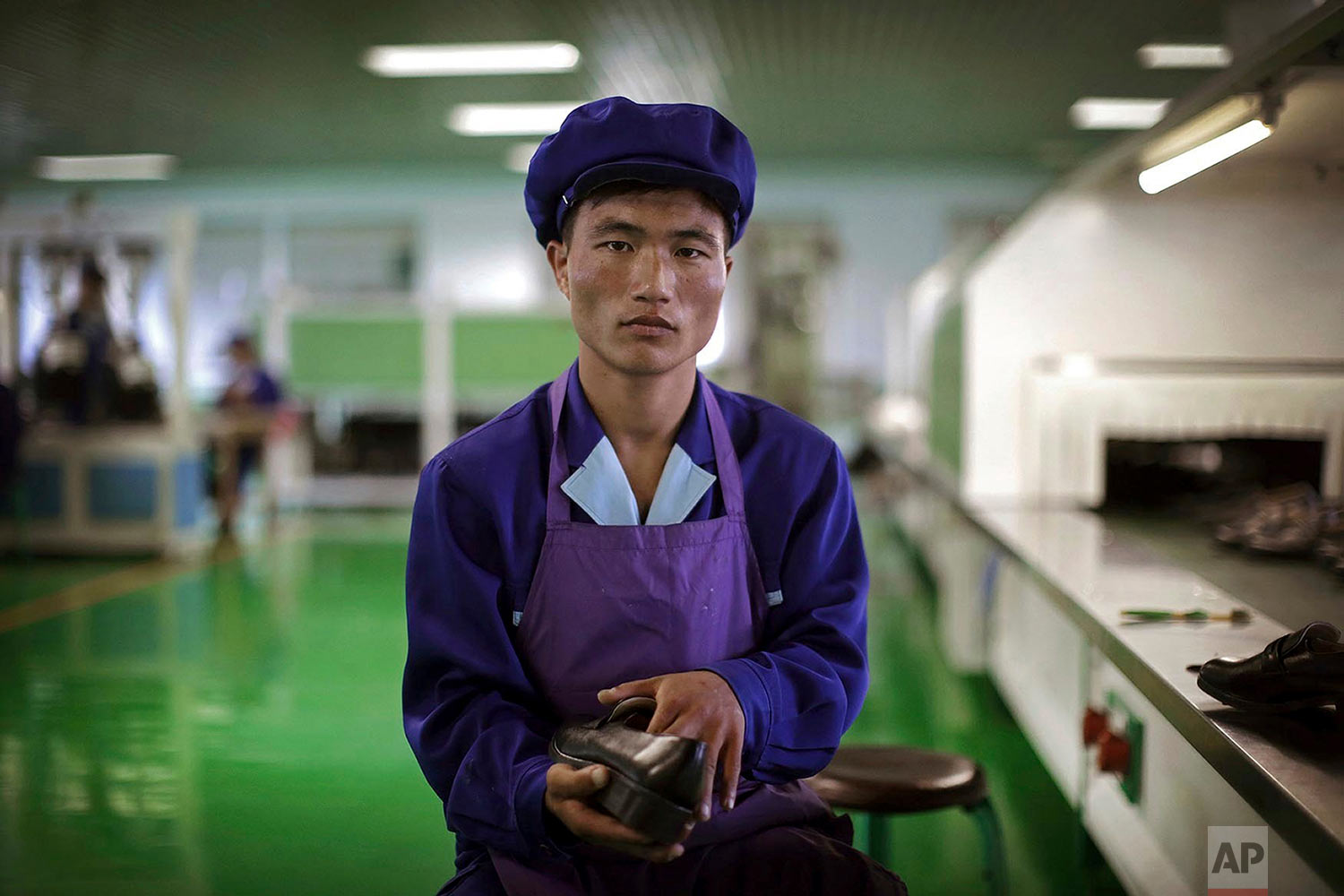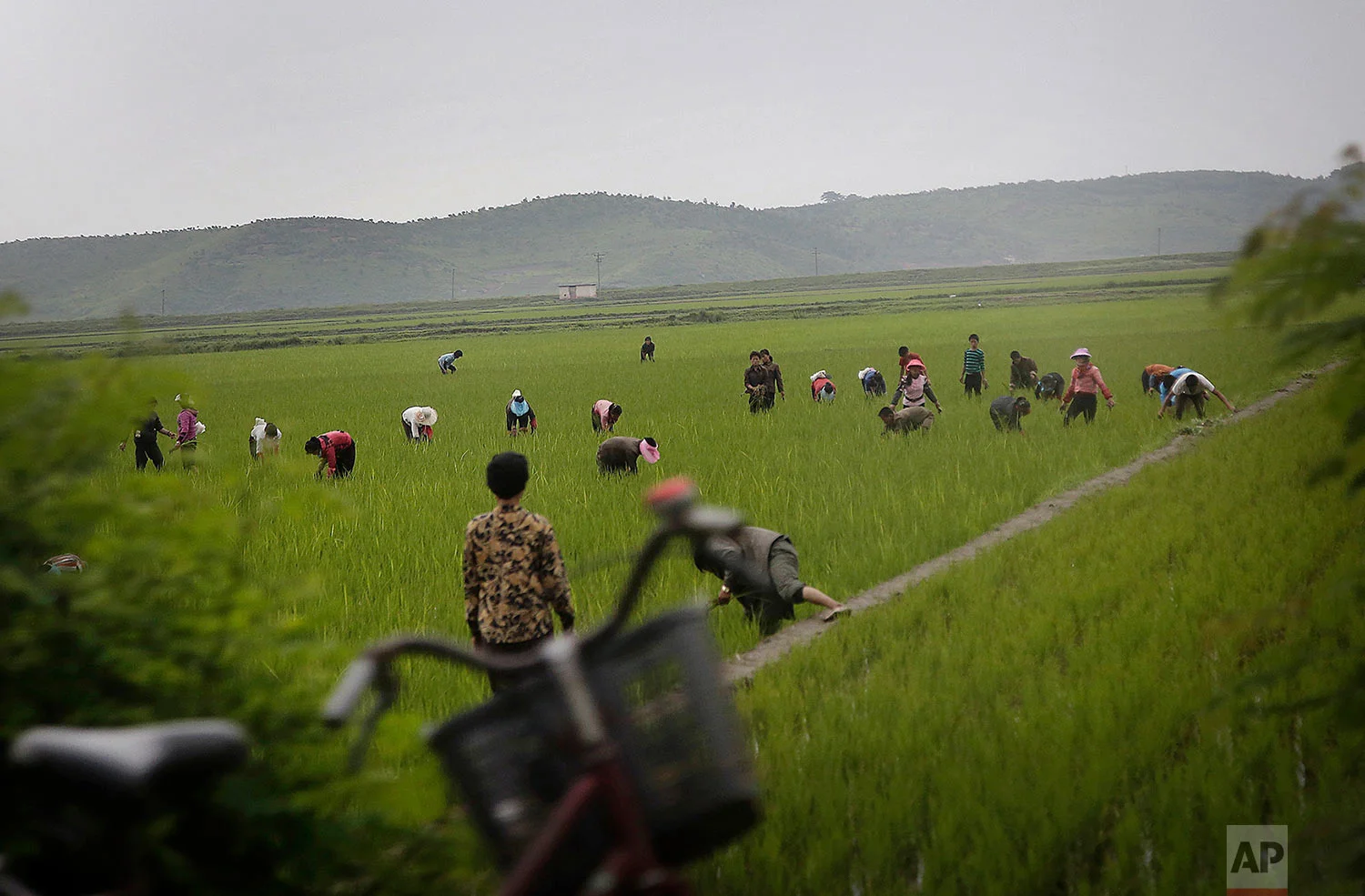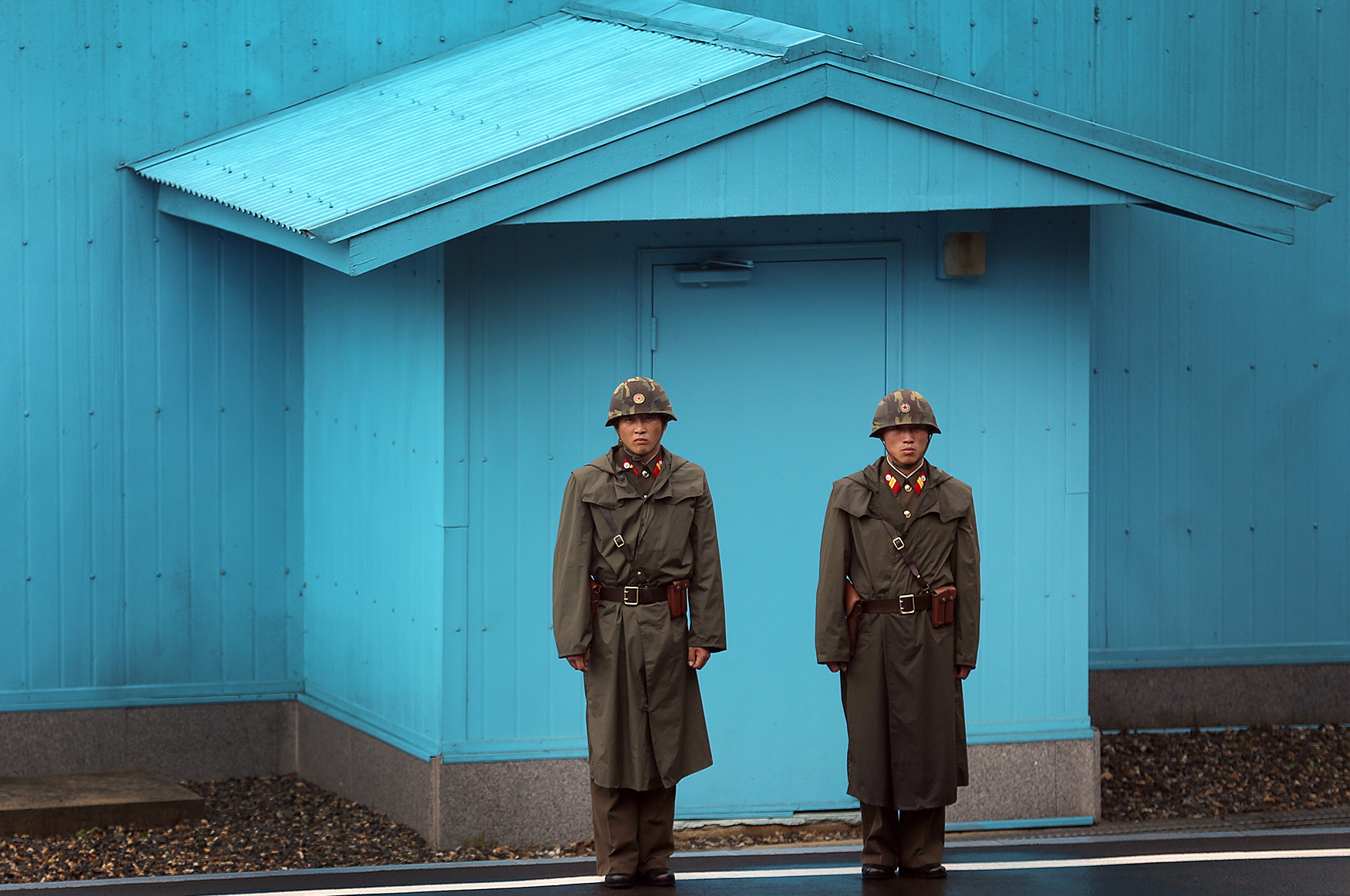North Korea: Workers

As the heroes of socialist propaganda, they are depicted as a self-sacrificing, proud proletariat upon whom the weight of the nation is said to depend. But the life of the worker in North Korea has never been easy.

A shaft of light from the morning sun illuminates a woman as she sorts out silkworm cocoons to be boiled at the Kim Jong Suk Silk Mill in Pyongyang, North Korea, on Jan. 6, 2017. The silk mill, named after North Korean leader Kim Jong Un's grandmother, is where 1,600 workers _ mostly women _ sort and process silkworms to produce silk thread that officials at the factory say is made into roughly 200 tons of silk a year. (AP Photo/Wong Maye-E)

A woman works at the Kim Jong Suk Pyongyang textile factory in Pyongyang, North Korea, on July 31, 2014. (AP Photo/Wong Maye-E)

Workers check finished products at the factory of a South Korean-owned company at the jointly-run Kaesong Industrial Complex in Kaesong, North Korea, on Dec. 19, 2013. The Kaesong complex just north of the border is the last remaining inter-Korean rapprochement project. (Kim Hong-Ji/Pool Photo via AP)

Kang Jong Jin, a 28-year old former soldier who attaches soles to shoes at a shoe factory in Wonsan, North Korea, poses for a portrait at his work station on June 22, 2016. (AP Photo/Wong Maye-E)

A shaft of light from a furnace shines through the Chollima Steel Complex in Nampo, North Korea, on Jan. 7, 2017. One of seven North Korean steel works, Chollima has more than 8,000 workers and is among the North's showcase enterprises. (AP Photo/Wong Maye-E)

A factory worker takes off his gloves at the Pyongyang 326 Electric Wire Factory in Pyongyang, North Korea, on Jan. 10, 2017. (AP Photo/Wong Maye-E)

A worker with a shovel stands near a furnace at the Chollima Steel Complex in Nampo, North Korea, on Jan. 7, 2017. Built by the Mitsubishi company during Japan's colonial rule of the Korean Peninsula from 1910 to 1945, the steel plant was destroyed and then rebuilt. Production resumed soon after an armistice halted the Korean War in 1953. (AP Photo/Wong Maye-E)

A staff member sweeps the floor in a hotel lobby in front of a picture featuring portraits of the late North Korean leaders Kim Il Sung, left, and Kim Jong Il on June 19, 2017, in Pyongyang, North Korea. (AP Photo/Wong Maye-E)

A hotel staff member stands at a reception desk decorated with a map of the world on Oct. 23, 2014, in Pyongyang, North Korea. (AP Photo/Wong Maye-E)

Song Un Pyol, manager at the upscale Potonggang department store in Pyongyang, North Korea, stands in the snacks aisle while being interviewed by The Associated Press on June 19, 2017. Three generations into the ruling dynasty begun by Kim Il Sung, markets have blossomed and a consumer culture is taking root. (AP Photo/Wong Maye-E)

Workers carry boxes of seafood on Nov. 8, 2013, as they load a Chinese transport truck at the Suchae Bong Corp seafood factory in Rajin, North Korea, inside the Rason Special Economic Zone. (AP Photo/David Guttenfelder)

People dine at the Ongnyugwan, a popular noodle restaurant in Pyongyang, North Korea, on Sept. 1, 2014. The restaurant, built in 1960 at the instructions of the late leader Kim Il Sung, claims to serve 10,000 lunches a day. (AP Photo/Wong Maye-E)

Beer servers Kim Yon Hui, left, and Yang Pok Yong wait to serve customers at the Taedonggang Beer shop in Pyongyang, North Korea, on May 7, 2016. (AP Photo/Wong Maye-E)

A traffic policeman directs pedestrians leaving an anti-U.S. rally that marked the 66th anniversary of the start of the Korean War at Kim Il Square in Pyongyang, North Korea, on June 25, 2016. (AP Photo/Wong Maye-E)

A man drives a bus while a woman looks out through the cracked windshield in Pyongyang, North Korea, on April 15, 2013. (AP Photo/Alexander F. Yuan)

Men and woman paint the roof of a restaurant in downtown Pyongyang, North Korea, on Oct. 25, 2014. (AP Photo/Wong Maye-E)

Men and women work in a rice field in Kangwon province, eastern North Korea, on June 23, 2016. The capital of Kangwon province is Wonsan, which is located along the eastern side of the Korean Peninsula and was one of the cities chosen to be developed into a summer destination for locals and tourists. (AP Photo/Wong Maye-E)

A farmer carries a fully grown cabbage after plucking it out from the main crop that will be harvested early next month and used to make Kimchi, at the Chilgol vegetable farm on the outskirts of Pyongyang, North Korea, on Oct. 24, 2014. After suffering a near cataclysmic famine in the 1990s, North Korea has since managed to increase its agricultural production to what international organizations believe is closer to the self-sufficiency level than the country has seen in years. (AP Photo/Wong Maye-E)

Men plow fields along the Pyongyang-Wonsan highway in Sangwon, North Korea, near Pyongyang, on July 20, 2017. (AP Photo/Wong Maye-E)
North Korea Galleries
The headlines are all about nuclear weapons and ballistic missile launches. But on the ground in North Korea, scenes of daily life attest to both the poignancy and resilience of a people struggling to succeed.
Along with its famous mass games, North Korea has taken the tradition of the military parade to a level all of its own. Its parades are used to show off the best and newest weapons in its arsenal and the almost-unhuman precision of its goose-stepping troops.
As the heroes of socialist propaganda, they are depicted as a self-sacrificing, proud proletariat upon whom the weight of the nation is said to depend. But the life of the worker in North Korea has never been easy.
In the totalitarian world of Kim Jong Un’s North Korea, everything begins from the center of Kim Il Sung Square, Pyongyang’s physical and spiritual center. And every neighborhood, it seems, has some sort of a statue or monument in honor of the Kim’s and the nation their created.
Grassroots barter and trade that began as a necessity in the famine years of the 1990s has grown into a quasi-legal market system that is now one of the most important drivers of North Korea’s domestic economy. For those who know how to navigate it, called the “money masters”, there are riches to be had.
For more than 60 years, the artificial dividing line between the two Koreas has separated families and stood as a testament to hostilities that have seemed to have no end. The Demilitarized Zone, despite its name, remains the world’s most heavily fortified border.
Visual artist and Journalist






Kim Jong Un is the third generation of North Korea’s ruling Kim family, the first and now only hereditary socialist dynasty. But while still in his early thirties, he appears to be as deft with wielding power as his grandfather, “eternal president” Kim Il Sung, and father, “Dear Leader” Kim Jong Il.